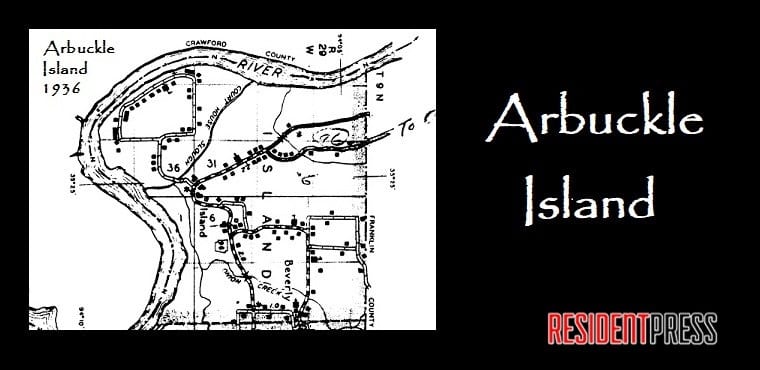There’s a place northeast of Lavaca that has an interesting history, stories of hearth and home, disaster and heartache. That place is Arbuckle Island.
In the early 1800s, Fort Smith was just a military post and most, if not all of the area towns had not yet been founded, General Matthew Arbuckle was given 20,000 acres of land in Arkansas by the United States Congress. Arbuckle was an Indian fighter, hero of the War of 1812, the Battle of New Orleans, founder of forts in Indian Territory and a peace-keeper between warring tribes. He was awarded the land holdings in what is now northeast Sebastian County. If you look at a Sebastian County map, you can see what is called the Island.
A large, two-story log home was built on Arbuckle’s land along with other buildings which served as slave quarters and a cook house. This plantation was located on what is now Highway 96 (which wasn’t built until 1935), just east of the Arbuckle Cemetery. The Crawford County Courthouse was nearby. Built in 1822, the two-story, clapboard roof building with no hanging doors or windows. Albert Pike, the major developer of Arkansas’ court system, and nineteen others spent the night there and all slept on the floor in one room upstairs during night sessions. The courthouse moved in 1838 to Van Buren as county lines changed.
Some of the first island residents were named Carrol, Self, Underwood, Posey, Hobbs, Burrows, Bryant, Thurman and others. In 1921, six young married couples move to the island at the same time. There were houses all over the Island then, all laid out with a house and a garden spot and a house and a garden spot and so on. A bridge crossed the Courthouse Slough and if you lived on the east side of the bridge, you could still reach your house. If you lived elsewhere on the Island, you had to use a boat around the rim of the island to reach your home.
In 1925 there were 75 homes on the island and a school. The teacher, Mr. Woodward, lived in a tent behind the school. The Arbuckle Store was across the bridge and provided everything needed. This area was known as Bridge City. Warren Martin recalled that there were two grocery stores, a doctor’s office (Dr. Davis), a barber shop and a beer joint behind the Island Cemetery. Dances and picnics were held on the island and people came from miles around to attend.
The Clem Hoover provided transportation across the Arkansas River between the island and Mulberry where some islanders did their grocery shopping. It followed a rope that pulled the ferry across the river. He could carry only one wagon at a time and averaged four or five wagons a day. The Dick
Arbuckle Island flooded just about every year. When the floods came the people would watch nearby Big Creek. If it overflowed into the Courthouse Slough, they knew it was time to get off of the island. In 1916 the river flooded and dumped tons of sand on the fertile rich bottom soil and ruined a lot of farms. Another flood in 1923 and then another in 1926 which cut the river through the middle of the island leaving gaping cliffs and cliffs on the river side of the island. Finally, in 1943, the island was completely flooded by rushing water and, when the flood waters receded, everything on the island was gone. All that remained for years was a cellar and the steps of the school house.
Albert Underwood recalled in a 1997 interview that occasionally the islanders would find old Spanish coins on the island and around. Jack Luckenbaugh, he said, found a jar of 1308 Spanish coins. Spaniards were here in the early years and did some silver mining supposedly.
Former Arbuckle residents and their survivors met almost every year around Decoration Day of the Island Cemetery. The memories of the adventures of living on or near Arbuckle Island draw them home again and again.







